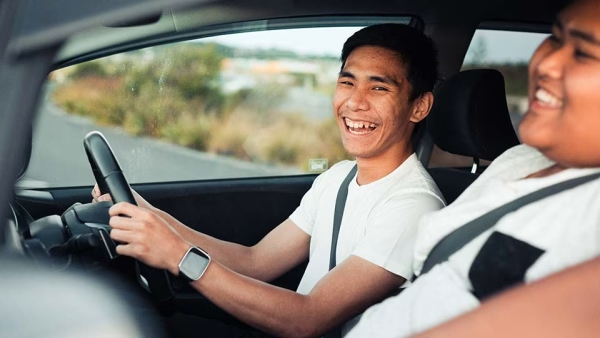Can international visitors drive in Australia?
The laws vary from state to state so it's important to check


One of the best things about living in an Australian city is that it’s easy to get around and have an active social life without a car. There’s no denying, however, that driving is really convenient and affords you the freedom and spontaneity to fully explore your new territory. So, if you’ve got an overseas driver’s license, can you drive here?
The laws vary from state to state. In some states you can drive with your current foreign license, provided you also carry a formal translation of your license into English. Other states will require an international driving permit, while if you’re in the Northern Territory or New South Wales for longer than three months you will need to apply for a temporary local license.
The best thing you can do is check the licensing laws in the state or territory you intend to drive in.
Essential tips for driving in Australia
Depending on what country you’re coming from, driving in Australia can be a daunting experience and there are some strict road rules you’ll need to abide by; breaking these rules may have legal ramifications and could impact your visa.
Some of the key things to remember when driving in Australia are:
Keep left: Unlike the USA and some parts of Europe, the steering wheel is located on the right-hand side of the car and we drive on the left-hand side of the road. The easiest way to remember this is that if you’re driving, you should always be closest to the middle of the road and your passenger should be closest to the kerb.
We have roads, motorways, tunnels and bridges that require you to pay a toll. These are generally in capital cities like Sydney, Melbourne and Brisbane. Some tolls can be paid in cash, while others require you to pay online shortly after using them.
Driving under the influence of illicit drugs is illegal and there is a strict blood alcohol limit of 0.05% for drivers in Australia; so, if you’re planning on driving, it’s best not to drink.
Seatbelts must be worn by all occupants of the car.
Watch out for animals crossing the road, especially at dusk and dawn. From kangaroos and wallabies, to koalas and possums, Australia is home to many animals that are renowned for wandering across roads and highways.
Although many of the rules across each state and territory are similar, it’s still important to check out the regulations of the places you’re intending on visiting below:

What other transport options are there?
Driving (and parking) can be costly, so fortunately most parts of Australia are well served with other transport options.
Public transport
Capital cities have easy to understand public transport routes, though it’s important to familiarise yourself with the ticketing systems before you go. Harsh penalties apply for fare evasion, intentional or otherwise.
Drive share programs
There are many car rental options for day-long hire and longer, however you can also join a car share program which allows you to hire a car for an hourly rate, and simply park it in a designated drop off area around the city. If this sounds appealing, check out this review of the different car share schemes.
Bikes
Cycling is a fantastic way to get around in Australia. It’s free, convenient, and great exercise! You can buy a bike quite cheaply second hand (check gumtree and local notice boards).
Australia is rapidly becoming a cycling nation, however we’re not yet as safe as some European cities (looking at you, Denmark). Some things to be aware of:
You’ll need to follow the same road laws as cars
Bike paths and bike lanes are safer than unmarked roads
The law requires you to wear a helmet
Legally, you’ll also need to have bike lights on at night
It’s also highly advisable to wear a reflective vest when cycling at night. It might not be the most fashionable item of clothing you own, but it just may be the most valuable. Each Aussie state has its own rules when it comes to cycling, so check out your state government’s webpage for more information.
Taxis and Uber
Should I take a taxi or an Uber? It’s the eternal question. There’s a great comparative guide here. Ubers are generally cheaper, but watch out for ‘surge pricing’ during periods of peak demand.
And remember, getting used to new driving laws and public transport systems takes time for everyone; don’t be put off. The more you travel, the more confident you’ll be and the more you’ll enjoy everything Australia has to offer. And there’s a lot!
Thinking about making the move to Australia? Get health cover that meets your visa requirements in less than five minutes. Learn more about our international student cover at OSHC.
Are you going to be working while in Australia? Find out more about our working visitor cover options.
For more information about all things Australia, visit the Life in Australia section of The Check Up.
Looking for health insurance that’s right for overseas student visa or 485 graduate visa?
Complete the form, or call us on 1800 775 204.
Understanding Australia's Reciprocal Health Care Agreement
Australia has agreements with 11 countries where you can access publicly funded emergency medical care.
Travel Tips as an Autistic Person
Insights from an autistic person on how to make travel stress-free.
How to easily incorporate hiking into your holiday
Learn how to blend fitness with seeing more of your travel destination




